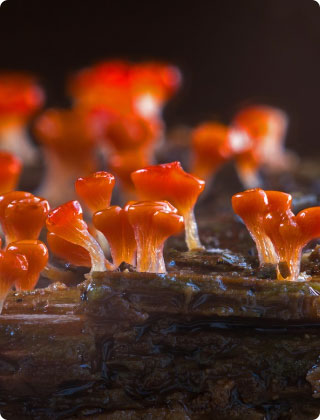
Red Mold: Identification, Testing and Prevention
Red mold isn't just an aesthetic problem; it's a silent intruder that could harm your home and health. Its presence often signals deeper issues like excessive moisture or poor ventilation. Ignoring it is risky - both for your property and your family. Mold inspection and testing play a critical role in addressing these issues before they spiral out of control. Let's dive straight into what you need to know.
Understanding Red Mold
What Is Red Mold?
Red mold doesn't always look red. Sometimes it's orange or even pink. Fancy, right? Not really. These colors often come from specific mold species like Fusarium or Neurospora. While they might look less intimidating than black mold, don't let the cheery color fool you - red mold can still wreak havoc.
Why Red Mold Is a Concern
Mold doesn't just sit quietly on your wall or ceiling. It grows, spreads, and eats away at materials like drywall, wood, and insulation. Meanwhile, the spores it releases can infiltrate your lungs, triggering allergies or worse. This isn't the houseguest you want overstaying its welcome.
Causes and Conditions for Red Mold Growth
Factors That Promote Mold Growth
Red mold thrives in damp, humid environments. Think of that forgotten corner of your bathroom or the leaky pipe under your kitchen sink. Add poor ventilation to the mix, and you've got the perfect breeding ground. Warmth and moisture are mold's best friends - don't let your home become their hangout spot.
Areas Prone to Red Mold Infestations
- Bathrooms and Kitchens: Constant exposure to water, coupled with humidity, creates an ideal environment. Shower stalls, grout lines, and areas beneath sinks are especially vulnerable.
- Basements: Basements often suffer from dampness due to poor drainage, water seepage, or condensation.
- Attics: Poor ventilation, roof leaks, or inadequate insulation can create moisture buildup, inviting mold.
- HVAC Systems: Moisture in ducts or around vents, particularly in poorly maintained systems, allows mold to grow and spread spores throughout your home.
- Unexpected Surfaces and Hidden Areas: Red mold can appear on windowsills, behind wallpaper, under carpets, or even on furniture.
Signs of Red Mold in Your Home
Visual Indicators
Red mold isn't subtle - it can appear as slimy patches, dusty splotches, or even streaks on surfaces. Common spots include tile grout, corners of walls, and around windows.
Hidden Mold Clues
Sometimes mold doesn't announce itself. Instead, it hides behind walls or under flooring. You might notice a musty smell or random discoloration.
Health Symptoms as Warning Signs
Can't stop sneezing at home? Does your chest feel tight? These could be signs of mold exposure. People with allergies, asthma, or weak immune systems are particularly vulnerable.
Importance of Mold Inspection and Testing
Why Mold Testing Is Crucial
Testing identifies the mold species and measures the contamination's severity. Proper testing is essential to tailor your response.
What Happens During a Mold Inspection?
Experts use moisture meters and infrared cameras to locate mold, even if it's invisible. They'll assess problem areas like crawl spaces and behind walls.
DIY vs. Professional Testing
DIY mold test kits exist, but professionals bring experience and equipment to the table. If your health or home is on the line, don't leave it to chance.
Steps After Testing: Addressing Red Mold
Evaluating Test Results
After testing, you'll receive a detailed report outlining the type and severity of the mold infestation. Professionals may recommend further inspections for adjoining areas.
Creating a Remediation Plan
For larger infestations, professional remediation is essential. Experts use specialized equipment to remove mold while containing spores.
Role of Mold Testing Companies in Follow-Up
Follow-up testing confirms that the mold has been completely removed and that spore levels are back to normal. Mold testing companies can also recommend preventive measures.
Why Choose O2 Mold Testing for Red Mold Concerns?
Mold isn't just a job for us - it's a mission. At O2 Mold Testing, we specialize in identifying red mold and other types, offering clear, actionable results. With fast turnarounds, transparent pricing, and a commitment to thoroughness, we're the team you want in your corner. Stop guessing; start solving.


